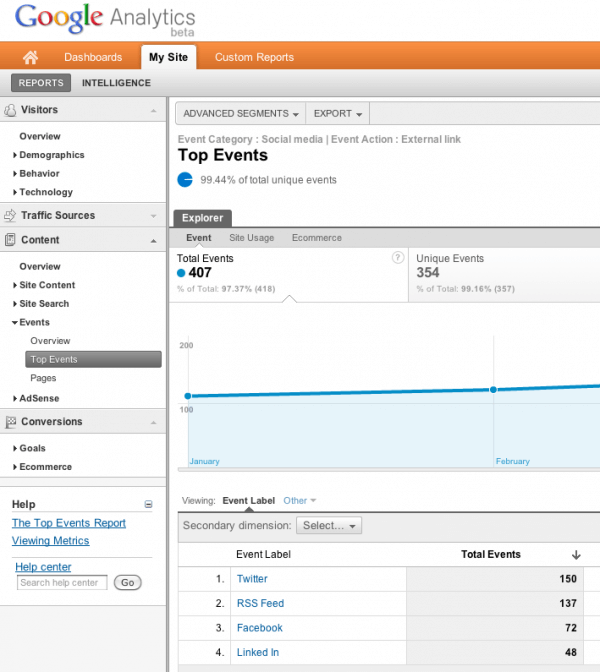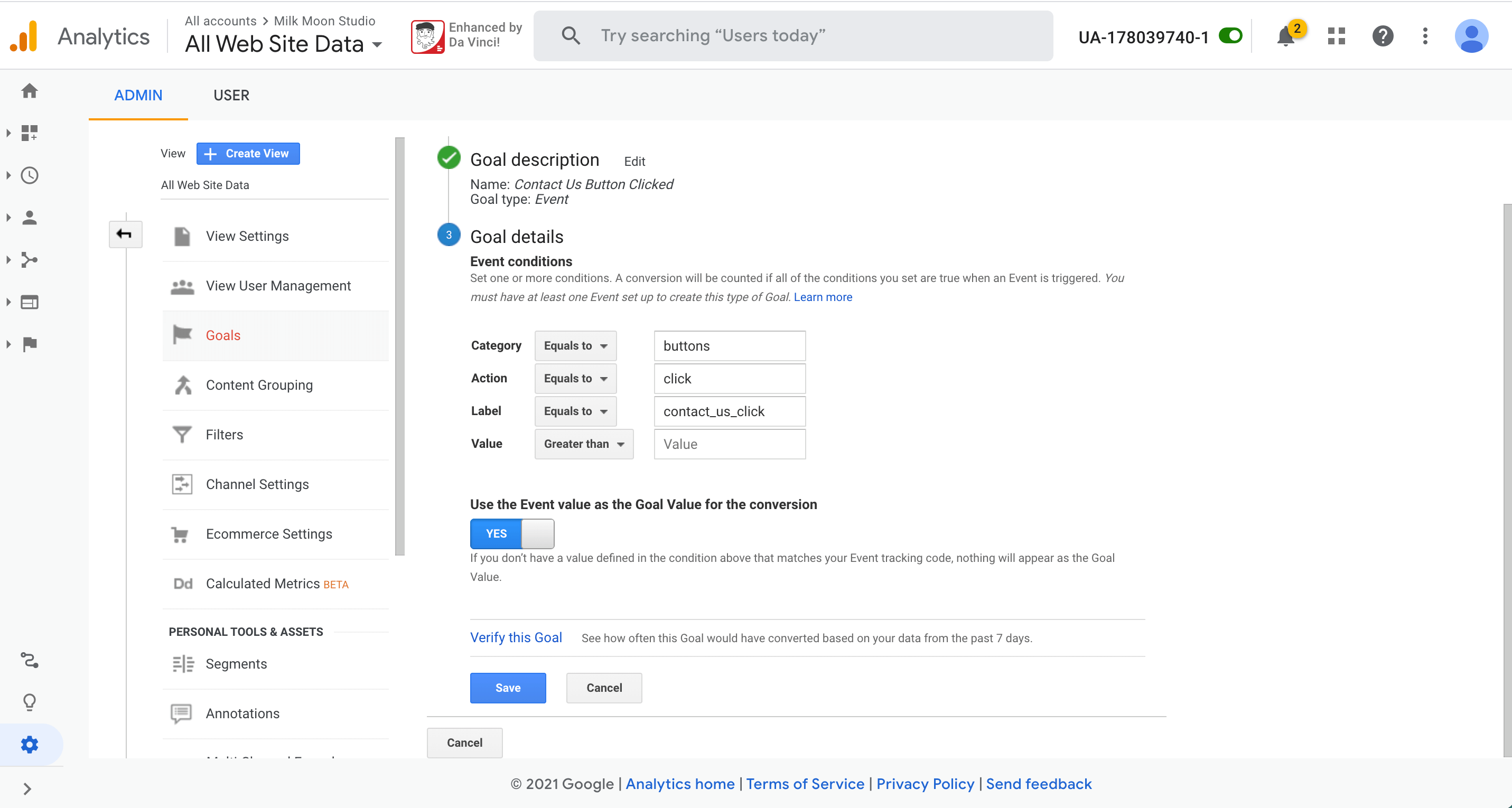Discover the Limitations of Google Analytics Goals: Unveiling the Data Types That Remain Untrackable
As companies increasingly count on data-driven decision-making, comprehending the constraints of tools like Google Analytics becomes vital. While Google Analytics Goals offer useful insights into individual interactions, there exist data kinds that elude monitoring, positioning difficulties to a thorough understanding of customer habits. These untrackable information types question regarding the precision and completeness of the analytics data that organizations greatly rely upon for their electronic methods. Interested to uncover the surprise blind areas in your information evaluation process?
Insufficient Individual Journey Tracking
Incomplete user journey monitoring within Google Analytics can prevent the ability to properly evaluate individual actions. When the user trip is not fully tracked, there are gaps in the information that protect against a comprehensive understanding of how individuals connect with a website. This absence of insight can result in missed out on opportunities for optimization and renovations to the user experience.
One typical issue with incomplete customer journey tracking is the inability to see the full course that users take in the past completing an objective or leaving the website. Without this information, it is challenging to recognize where users may be running into barriers or rubbing points that avoid them from converting. Additionally, incomplete monitoring can obscure the effect of certain advertising initiatives or website changes on individual actions.
To address this limitation, it is essential to establish up appropriate tracking systems within Google Analytics to capture the whole individual journey. This might entail setting up event tracking, goal funnels, or using devices like Google Tag Supervisor to guarantee that no essential interactions go unrecorded. By gaining a detailed view of the customer trip, site owners can make more informed decisions to improve user involvement and drive conversions.
Acknowledgment Difficulties
Browsing through attribution challenges in Google Analytics requires a detailed understanding of how different touchpoints add to the total conversion procedure. Attribution challenges emerge from the intricacy of modern-day consumer journeys, where individuals connect with numerous networks before transforming.
One common attribution obstacle is the trouble in connecting conversions to the correct resource, specifically in instances where customers interact with multiple channels prior to transforming. This can cause errors in establishing which advertising and marketing efforts are driving one of the most conversions. Additionally, cross-device monitoring poses another attribution difficulty, as customers usually change in between gadgets during their journey, making it testing to track their interactions seamlessly. Online marketers have to very carefully examine and interpret attribution information to make enlightened choices and maximize their advertising techniques properly.
Offline Conversions
Given the difficulties related to associating conversions properly in online networks, the measurement of offline conversions offers a substantial chance for online marketers looking for a more thorough understanding of their customers' trip. Offline conversions refer to activities that consumers take in the real world, such as making purchases in brick-and-mortar shops or over the phone, attending occasions, or involving with printed materials - what data is google analytics goals unable to track. These conversions are critical for businesses that run both online and offline, as they give important insights right into the effectiveness of advertising campaigns throughout different touchpoints
Tracking offline conversions commonly posed a considerable obstacle for marketers, as it was testing to attach these activities back to particular on-line communications accurately. Nevertheless, with innovations in modern technology, such as the assimilation of CRM systems, unique identifiers, and discount coupon codes, businesses can currently visit their website connect the void between online and offline information to acquire a much more all natural view of customer behavior. By effectively measuring offline conversions, online marketers can optimize their techniques, designate sources a lot more effectively, and eventually enhance the overall client experience.
Cross-Device Tracking
Cross-device monitoring plays a critical role in comprehending the interconnected nature of consumers' digital communications across numerous devices. In today's omnichannel world, where users seamlessly switch over in between smartphones, desktops, and tablets, tracking their habits across these tools is crucial for marketing professionals to get a comprehensive sight of their consumer trip.

Moreover, privacy worries and laws such as GDPR and CCPA have additionally complex cross-device tracking. With individuals demanding even more control over their data and enhanced restrictions on tracking modern technologies, marketing professionals have to locate cutting-edge and privacy-compliant ways to link individual interactions across devices.
Dynamic Web Content Involvement
Recognizing user engagement with vibrant content is crucial in enhancing electronic advertising and marketing strategies for enhanced target market communication. Dynamic content refers to website aspects that change based on user actions, choices, or other elements, providing a tailored experience. Nonetheless, tracking individual interactions with vibrant content positions challenges for typical analytics devices like Google Analytics.
While Google Analytics can track standard interactions like clicks and page sights, it may have a hard time to capture more nuanced interactions within dynamic content. what data is google analytics goals unable to track. Metrics such as time invested on particular dynamic elements, float activities, or interactions within pop-ups are typically not quickly quantifiable utilizing conventional tracking approaches. This constraint impedes online marketers' capacity to totally realize exactly how individuals are involving with dynamic web content and tailor their methods accordingly

Final Thought
Finally, Google Analytics goals have restrictions in tracking insufficient customer trips, attributing conversions accurately, find out here catching offline conversions, tracking cross-device interactions, and gauging dynamic web content involvement. These constraints highlight the relevance of discovering added monitoring approaches and tools to gain a much more extensive understanding of individual actions and conversions past what Google Analytics can supply.
While Google Analytics Goals deal useful understandings right into customer communications, there exist data kinds that thwart monitoring, posing challenges to an extensive understanding of user habits.Incomplete customer journey tracking within Google Analytics can impede the capability to precisely click now examine user behavior. When the individual trip is not completely tracked, there are spaces in the data that avoid a thorough understanding of just how individuals connect with an internet site.One typical issue with incomplete user trip monitoring is the inability to see the full course that customers take previously completing an objective or leaving the website. By obtaining a comprehensive sight of the customer journey, internet site owners can make even more enlightened choices to enhance customer interaction and drive conversions.
Comments on “What Data Is Google Analytics Goals Unable to Track: Discover the Limitations”